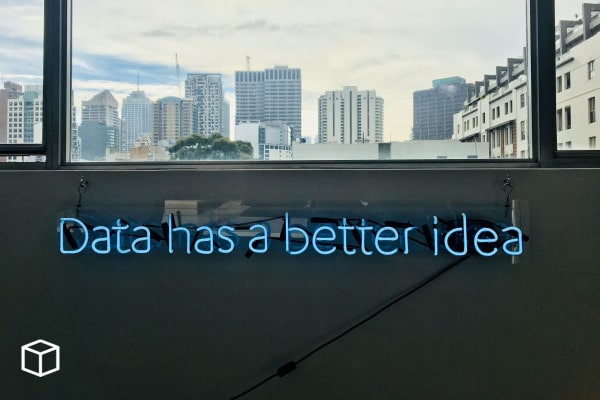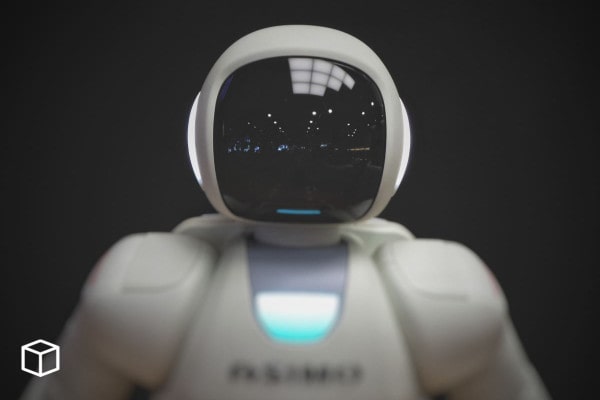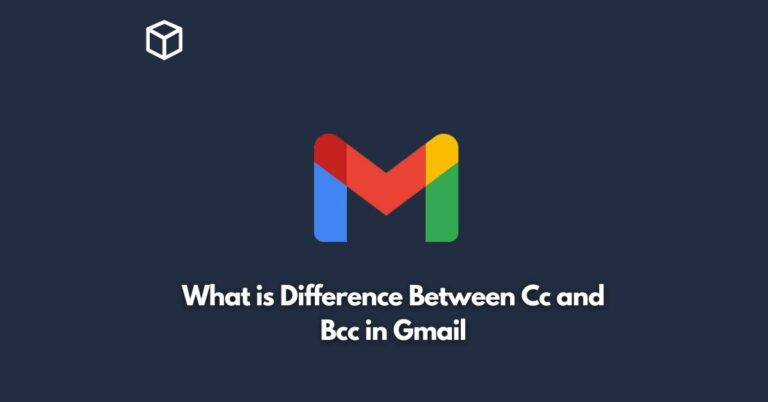Artificial intelligence (AI) is the theory and development of computer systems able to perform tasks that normally require human intelligence.
It describes technologies that go beyond manual labor, but do not yet involve thinking.
In this article, we will look at Artificial Intelligence [AI] in detail and will try to answer all your questions with regards to this new technology.
Let’s start.
What is Artificial Intelligence (AI)
The AI is a branch of computer science. It can be used in complex tasks such as solving complex problems, reasoning, learning, perception and the decision-making.

AI aims to analyze intelligence and create intelligence systems with human characteristics. The artificial intelligence has been divided into three main categories: strong AI, weak AI, and mixed-initiative intelligent systems.
Weak AI is used in the advantage of other systems while strong AI has its own mind. If you gather all three categories, artificial intelligence can be defined as the attempt to create advanced intelligent systems that act and react like humans do using technology, science, philosophy and other disciplines.
AI techniques are still very primitive at this time but it’s getting more and more advanced. With the help of AI we can make our life easier and solve many global problems such as shortage of clean energy or eradicating diseases.
Despite all that, there are still some people who fear the artificial intelligence because it could get out of control and become a threat to humanity.
AI is already utilized in very simple tasks such as checking the working hours of a shop or guiding a customer in a supermarket.
There are also some examples of cognitive systems that interpret and create music. In many areas, artificial intelligence can be used to make decisions on behalf of humans such as medical diagnosis, weather prediction or sorting spam from our inboxes.
How Does Artificial Intelligence Work?
Artificial Intelligence is a computer’s ability to imitate human behavior. AI includes techniques such as machine learning and natural language processing, but is not the same thing.

An artificial intelligence system can process information in order to achieve goals set by its creators, called “intelligent agents.” They need a lot of digital data of a certain type, often correct answers to particular questions or patterns for activities like face recognition or reading text.
Once they have enough data on record, they use it make predictions about things they’ve never seen before based on what they know from their experience. The closer an artificial intelligence program gets to the ideal model given the initial information that designers provide for it, the more intelligent it’s said to be – that is how artificial intelligence is defined.
Artificial intelligence is not the same thing as ‘machine learning’: machine learning can be considered a tool that’s used for various tasks, whereas artificial intelligence is the overarching term that includes any form of “smart” behavior performed by computer programs.
Machine learning has already changed Internet searching and online shopping with recommendations based on our previous purchases. Surprisingly, machine learning is also applied to military uses of artificial intelligence, such as drone fighting and war simulations.
Artificial intelligence systems are used extensively in the Internet of Things, which means that people can interact with objects remotely through digital networks.
Robots are another example of how artificial intelligence has evolved over recent years: they carry out complex commands from the human being, and their ability to learn from experience makes them far more useful than they have been in the past.
What are the Types of Artificial Intelligence?
There are eight main types of artificial intelligence:
– Narrow AI (narrow artificial intelligence)
– Artificial General Intelligence (AGI)
– Consciousness (artificial consciousness)/Artificial sentience
– Computational Intelligence (CI)
– Linguistic intelligence (LI)
– Learning Intelligence (L2)
– Moral intelligence (MAI)
– Natural Language Processing (NLP)
Narrow Artificial Intelligence: a form of AI that utilizes the abilities and skills outlined above to solve specific tasks. These include: search engines, voice assistants, self-driving cars, and more.
Artificial General Intelligence (AGI): a form of AI that has the human-like capacity for common sense knowledge, integrated learning system, reasoning, problem solving, and learning.
Artificial Consciousness: the ability of computers to think in a manner similar to humans via logical reasoning(RL).
Consciousness/artificial sentience: This type of AI is the result of being able to process all sensory data that humans are able to as well as having the ability to reason and understand language.
Computational intelligence (CI): a type of AI inspired by biological neural networks. These systems can mimic human-like properties such as reasoning, learning, and problem solving through the use of programming languages like Lisp and Prolog.
Artificial linguistic intelligence (ALI): a type of AI that has the ability to understand and generate language.
Learning intelligence (L2): a form of AI that is able to learn without human intervention through the utilization of RL.
Moral intelligence (MAI) – also known as ethical artificial intelligence: an AI system capable of recognizing social phenomena, understanding the intentions, motivations, and desires of individual actors, behaving autonomously, and making decisions that are moral.
Natural Language Processing (NLP): an AI technique able to perform various tasks such as translation, speech recognition, dialogue systems, machine learning etc.
What are examples of Artificial Intelligence?
Examples of Artificial Intelligence include the following:
- Robot with artificial intelligence is an autonomous robot that has artificial intelligence. They are designed to act like human beings and are programmed to act in specific ways.
- Fake news is an example of artificial intelligence that has been created to fool people into believing something that is not true.
- The Internet of Things (Iot) is an example of artificial intelligence because it refers to interconnected electronics, things, and data which can transfer between each other for the purposes of information sharing, analysis, and optimization.
How Artificial Intelligence Is Being Used
The use of artificial intelligence is a hot topic around the world. The AI industry has been growing at a very fast rate over the last few years.
This growth can be attributed to the increased interest from many businesses as well as startups.
In recent years, there have been high profile examples showing how AI can help solve some really difficult problems.
One example was when Google’s Deepmind system taught itself how to play and win at Atari games without any human input or instruction. Another example was when IBM’s Watson beat two champions on Jeopardy!
These cases show that AI can not only be used for just games and trivia, but it can also do things like help diagnose diseases.
Brief History of Artificial Intelligence
In the 7th century, a Greek mathematician called John Philoponus gave an argument that machines would eventually be able to think.
In the 17th century, a man named René Descartes also talked about how his mind and body were two separate entities and that it was possible for a person’s mind to exist without the body. He argued that because he could conceive of his mind without a body, so too could God.
This idea was further developed in 1637 by Sir Francis Bacon, who argued that knowledge is power and saw that as the future progress of humans.
The first computer algorithms were designed in 1847 by Ada Lovelace and published in 1843. By 1912 Alan Turing had considered the possibility of a machine thinking and even dreamt about a conversation between a man and what was to become of one of the first artificial intelligence machines.
In 1933, Alan Turing published “On Computable Numbers” which introduced his idea of the Turing Machine, a hypothetical device that manipulates symbols on a strip of tape according to a table of rules.
In 1950, a chess-playing computer was created, followed by the first chatbot program, named ELIZA. In 1964, Joseph Weizenbaum created a computer program that he called a “chatterbot”, which would simulate basic conversation, and gave it the name Eliza.
In 1966 Marvin Minsky and Dean Edmonds built the first neural network simulator. In 1971, the SHRDLU program created by Terry Winograd could carry on a dialogue and answer questions about blocks that were arranged in particular positions on a table.
In 1974 Noam Chomsky published “Reflections on Language”, which is still influential in research into artificial intelligence today.
In 1977, Joseph Weizenbaum created a program he called “Elbot”, which was designed to fool people into thinking it was human. The 1980s saw research being done in robotics, expert systems and speech recognition.
In 1990, the first virtual pets were developed and they would be able to learn from their surroundings and develop their understanding of the world around them.
Between 1992-1994, evolutionary robotics was introduced into the world of artificial intelligence. These robots would be able to evolve and improve their own performance without any human intervention.
The Turing Test was first developed by Alan Turing in 1950 and it proposed that if a machine is indistinguishable from a human then we can assume that it must have independent thought and intelligence. In 1997, the Loebner Prize in artificial intelligence was created, which is still running today.
Why is Artificial Intelligence important?
AI is important because it allows humans to do things that are too hard or impossible for them to do.
AI will help solve difficult problems by tackling superhuman tasks, filling critical vacuums, performing repetitive drudge-work and carrying out dangerous assignments.
AI can save lives in battlefields or disasters by taking over for humans who would be lost without machine assistance.
What is Composite AI?
Composite AI uses a combination of statistical and analytical techniques to infer the characteristics of the data.
It is a computer-based artificial intelligence modeling.
The system uses a combination of statistical and analytical techniques to infer the characteristics of the data.
In general, it is useful for non-linear relations that can not be modeled by mathematical functions or in cases where the nature of the relationships is unknown. In order to do this, it requires labeled examples from which is models these relationships.
What are the Prerequisites for Artificial Intelligence?
Some of the prerequisites for AI are:
1). A lot of data
2). A clean and complete categorization of said data.
3). Algorithms that help with both these tasks.
4). Powerful computers to perform the processing necessary when training an AI system.
5). Intelligent coders that can recognize patterns in this data and then write the algorithms that will enable the AI system to learn from it, finding new patterns without oversight from a human programmer.
6). Lots of time to do all this.
What are some Applications of Artificial Intelligence in business?
Artificial intelligence is a term that refers to the concept of machines that are able to reason like humans.
A lot of this information is obtained through the use of systems that are able to perform tasks on their own. Systems can deal with data, analyze it and come up with results. This is done without any human intervention.
The applications of artificial intelligence in business are many. Artificial intelligence has been used by companies in order to help them make better decisions concerning products.
It has also helped companies provide these products at better prices. Companies have used it to find more efficient ways to provide services. There are also fewer errors when it comes to artificial intelligence systems.
There are companies that use artificial intelligence in order to ensure that their products are developed with the final user in mind. This method is known as user-centered design.
Companies can use this system in order to get feedback from customers about what they expect from their products. They can then design these products through the use of artificial intelligence which helps them focus on specific needs that are expressed by customers.
Another application is in sales and marketing techniques. Artificial intelligence is now used to come up with highly targeted ad campaigns. This allows companies to reach more customers for less money at the same time.
There are even companies that make use of artificial intelligence in order to come up with personalized offers for customers. They do this by analyzing their buying habits along with the content they post online.
This allows them to craft product pitches that attract their attention at the same time allowing them to enjoy these products at the best prices possible.
What are Everyday Applications of Artificial Intelligence
AI has many everyday applications, some of which are newer than others. Some of the more new uses for AI are in robotics.
Robots can be used to perform tasks that humans would otherwise have to do for themselves like driving, picking up objects, cooking food and cleaning.
The AI robots are partially autonomous and they follow pre-programed lines of commands to complete their assigned tasks.
Artificial intelligence is also used for teaching computers how to understand human emotions by using deep-learning algorithms that learn what it means when someone smiles or frowns.
These robots are said to be more efficient than humans, they can work continuously without tiring or complaining. This is another great example of AI that helps people.
There are many other examples of how artificial intelligence has helped people like helping scientists study the universe and exploring distant planets.
Artificial intelligence machines help assist doctors diagnose illness by scanning images of human body parts. These are just some of the many beneficial uses for artificial intelligence in everyday life.
What are the advantages of artificial intelligence?
- It frees up time with tasks that humans are not able to do.
- The quality of life improves.
- It is able to make predictions about future events.
- AI can (in theory) be more objective than humans.
- It makes life easier by finding patterns in large datasets.
What are the disadvantages of artificial intelligence?
- AI can make mistakes, if not programmed correctly.
- There are many ethical issues with AI, such as autonomous weapons.
Artificial Intelligence Jobs
Artificial intelligence jobs are on the rise, but what does that really mean for you?
Artificial intelligence (AI) refers to computer systems that think like humans or animals. There are many different types of AI, but they all require human intelligence and detail for implementation.
There are many benefits of AI implementation. Artificial intelligence is able to take on work too complicated or dangerous for humans to do.
Jobs involve using processes that would be difficult for a human but easy for an AI robot. Using AI allows companies to work with fewer employees, which can lead to lower costs.
AI can also lead to better quality control because it has access to more data than any human could process in their lifetime. As of now, artificial intelligence is used to manage accounts, schedule meetings, analyze data, improve customer service and more.
A recent study by the McKinsey Global Institute predicts that AI will be able to create additional value of around $13 trillion in 2025.
his means there are many job openings in artificial intelligence development. The question is: if you don’t work directly with AI technology how can artificial intelligence affect the job market?
1. Artificial Intelligence Engineer
Artificial intelligence engineer jobs require a computer science degree, a deep understanding of math and coding knowledge. These professionals are expected to have strong problem-solving skills as well as an above-average understanding of AI algorithms.
As an artificial intelligence engineer, you would be responsible for taking the data that needs to be processed and figuring out how it will go through each step in order to arrive at a conclusion. This type of job is very detail oriented and requires someone who has strong critical thinking skills. Artificial intelligence engineers are expected to focus on the way technology works, rather than trying to replace technology.
2. Artificial Intelligence Researcher
Artificial intelligence researcher jobs require a doctorate degree in computer science or machine learning. Researchers are responsible for conducting experiments to develop AI capabilities and also figuring out new uses for them. They’re expected to be able to work with different types of AI systems, including robotics.
This type of job requires great critical thinking skills as well as the ability to work with large amounts of data. Researchers are expected to be able to think outside the box and figure out how things could unfold in multiple ways. They’re also responsible for making sure that nothing goes wrong during an experiment.
3. Data Scientist
Data scientists have a broad understanding of how data works, including artificial intelligence and machine learning. This type of job is common in almost every industry because it’s necessary to prove that any AI decision is valid. In order to do this, you need a clear understanding of how the technology works, including its limitations.
In many ways, this type of job is no different from a normal data entry position. You would need to have a working knowledge of how AI works and how to use that information to your advantage in order to benefit the company you work for. For example, if you’re using an AI scheduling tool it’s important for you to know what to do if it reaches its limits.
4. Computer Scientist
Computer scientist jobs require a bachelor’s degree, but you’ll likely need to take extra math courses in order to understand algorithms and data structures. You’ll also be expected to be familiar with the types of AI that are currently on the market (such as machine learning or natural language processing) and how they work.
Computer scientists are expected to know at least one programming language, such as C++ or Python, in order to develop AI capabilities or code certain algorithms. If you have a computer science degree this type of job could be a good fit for you because it’s accessible and easy to understand the basics. Just make sure to brush up on the most recent AI concepts, such as machine learning.
5. Data Engineer
Data engineers are responsible for refining data and making it accessible for both humans and computers. In most cases, this is done by using a database tool or an augmented intelligence platform. This type of job doesn’t require any specific degree, but it’s important to have a strong math background.
Data engineers are expected to be able to work with tech professionals in order to get the job done, which means they should be able to understand how AI works and what can go wrong if it’s not operated correctly. Data engineers are also responsible for being able to clean up data so that it’s accessible for use in different AI algorithms.
Career Trends in Artificial Intelligence
AI is the most rapidly expanding field in technology.
Companies are investing billions of dollars in AI research, development and deployment.
AI-related jobs are growing at a scorching pace.
AI has been used extensively in banking, finance and insurance industries.
It is also widely applied to manufacturing, service industry, retail sector and healthcare among others.
AI has a wide range of applications in the financial sector.
They include investment and trading decisions that involve emotional intelligence, risk assessment and dynamic portfolio allocations.
Companies are using AI to develop automated assistants for stock market traders as well as credit card accounts.
What is the Future of Artificial Intelligence?
Some people are worried that artificial intelligence will replace human jobs. It’s possible that artificial intelligence might take the place of humans in some jobs.
It’s also possible that new jobs will be created that haven’t existed before. Artificial intelligence could also change the skills needed to do some jobs.
Right now, it is hard to predict exactly how artificial intelligence will change the workplace.
There are both positive and negative possibilities for how artificial intelligence might affect jobs. One possibility is that artificial intelligence will improve human lives by making goods cheaper, safer or more effective.
The technology industry has already created many jobs. It’s possible that even more jobs could be created.
One thing is certain: if artificial intelligence does change the workplace, it will not happen all at once. It will be a gradual process that might take years or decades to complete. Society has time to think about how to deal with this situation.
What are some best Artificial Intelligence Movies?
An artificial intelligence movie is a term given to films that deal with artificial intelligence.
These films can show how A.I. progress over time, or showcase an A.I. turning on the world and destroying it in some form or another.
These films can be used to show how humans fear what they do not understand, and the danger of letting advancements in science go unchecked. Some films are focused more on developing sympathetic characters instead of focusing on action or suspense.
1. A.I.: Artificial Intelligence (2001), directed by Steven Spielberg, stars Haley Joel Osment and Jude Law.
A highly-advanced robotic boy named David is one of many in a class of humanoids without the built-in inability to inflict harm on humans which had been originally programmed into the others. When David is abandoned by his human mother, he embarks on a journey to discover where he belongs in the world, while adapting to being different than other robots.
2. Westworld (1973), directed by Michael Crichton, stars Yul Brynner and Richard Benjamin.
Majestic 12 has developed a high-tech Western theme park, featuring automated cowboys and Indians. The robots malfunction and begin killing the guests, who are unaware of the true nature of their android doubles.
3. Blade Runner (1982), directed by Ridley Scott, stars Harrison Ford and Rutger Hauer.
In a cyberpunk vision of Los Angeles 2019, genetically engineered replicants are created to work on off-world colonies. When a fugitive group returns to Earth, burnt-out cop Rick Deckard is hired to “retire” (kill) them.
4. The Terminator (1984), directed by James Cameron, stars Arnold Schwarzenegger and Linda Hamilton.
The human resistance sends a reprogrammed android, referred to as “The Terminator”, back in time to 1984 to protect the soon-to-be born son of Sarah Connor. However, the human-resistance movement in 2019 discovers that in addition to protecting John Connor, another is sent back at the same time to ensure that he will not be born.
5. RoboCop (1987), directed by Paul Verhoeven, stars Peter Weller and Nancy Allen.
A partially-robotic police officer attempts to regain his humanity while fighting crime in a dystopic and heavily corporate near-future Detroit.
You Might Also Like
- Best Coding Apps for Beginners
- What is Web Development and How to Learn it
- What is Mobile Development and How to Learn it
- What is Proxy server and How does it work?
- What is Hadoop and How does Hadoop work?
- What is Django and How does it work?
- What is TensorFlow and How does it work?
- What is Scala and How does it work?
- What is GitHub and how does it work?
- What is Machine Learning and how does it work?




